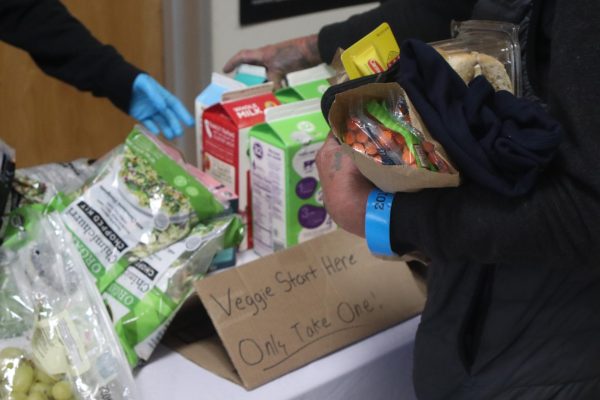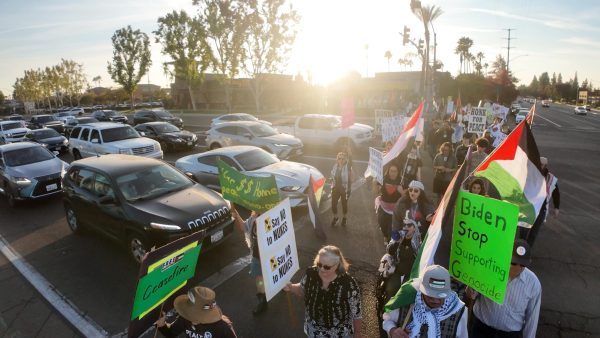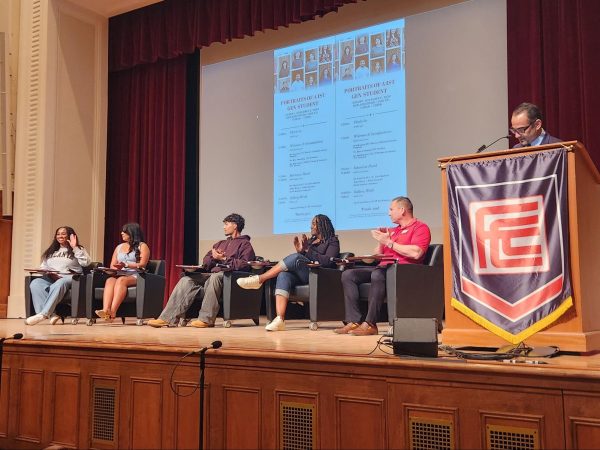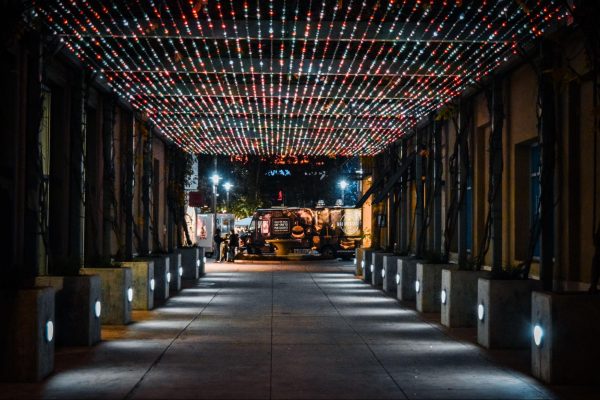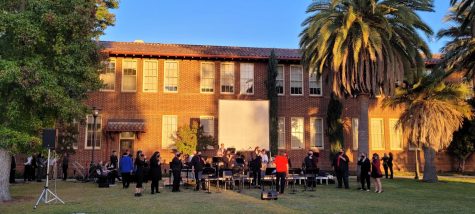Living Undocumented
Jaquelin was only 7 years old when she crossed the border.
The trip from Tijuana to the border took three days. She remembers every detail. The tall, grassy field where they met their guide, the same grass they walked through for miles. Her mother’s hands and feet grew swollen, and she could no longer walk.
“So she [her mother] decided we were just going to give up, and we were just going to go back home,” Jackie said.
And then there was a white truck. A white man asked them if they had an ID. Her mother didn’t understand.
So she only said, “Yes.”
He gave them a ride to the border. “When we came to the last check up, they just checked the truck, didn’t ask us for any information and just let us through,” Jackie said.
Jackie thinks it might have been because of her fair skin.
Jackie and her mother managed to reach the U.S.-Mexico border before entering San Diego on Sept. 22, 2007. “We started seeing all these beautiful houses everywhere that we had never seen before,” Jackie said.
“And that’s when my mom said, ‘This is it. I think we made it.’”
The Nation of Immigrants
As of this year, the U.S. has more immigrants than any other country, according to a 2015 estimate by the United Nations.
More than 40 million U.S. residents were born in another country, according to the Pew Research Center, a nonpartisan think tank.
The U.S. foreign-born population is 44.4 million as of 2017 according to figures from the Pew Research center.
- 20.7 million – Naturalized Citizens
- 12.3 Million – Lawful Permanent Residents
- 2.2 Million – Temporary Lawful Permanent Residents
- 10.5 Million – Unauthorized Immigrants
Forty-five percent were naturalized citizens; 27% were lawful permanent residents, 5% were temporary lawful residents and about 23% are unauthorized immigrants, according to the Pew Research Center’s findings.
The number of immigrants in the nation has increased since 1965 when U.S. immigration laws replaced a national quota system.
Between 1990 to 2007, the undocumented immigrant population more than tripled in size, from 3.5 million to 12.2 million.
A decade later, the number of immigrants had declined by 1.7 million and the number of undocumented immigrants was down to 10.5 Million.
The decline in the undocumented population is due to a decrease in immigration from Mexico, the source of the largest group of undocumented immigrants in the U.S. between 2007 and 2017.
Immigrants eligible for naturalization apply to become citizens; however, lawful immigrants from Mexico have the lowest naturalization rate overall. Some of the obstacles to their citizenship include language and personal barriers, lack of interest and low finances.
Immigrants settle mostly in urban areas. Cities such as Los Angeles and New York City have about 6 million immigrants; Miami has about 3 million.
Seattle, Sacramento, San Jose, San Diego, Riverside, Las Vegas, Phoenix, Orlando, Detroit, Philadelphia, and Boston are estimated to have around 500,000 immigrants each.
DACA
Jackie, like so many others, was brought to the U.S. as a child by her parent. The U.S. is the home she’s known longest.
She spent the majority of her childhood in Tulare. She was bullied for the language barrier she struggled with growing up. She has faced slurs, sickness, and poverty—her mother worked the fields her entire life.
“I remember my house being halfway built the entire time that I lived there,” she said. “I always remember not having shoes, my clothes being raggedy, it was terrible,” she said.
She is 21 now, and a DACA recipient.
The DACA program was enacted in 2012 during the Obama administration and mainly impacted students who lived in the U.S. undocumented. It allowed some individuals who were brought to the United States as children to apply and receive a renewable two-year period of deferred action from deportation and work permit eligibility.
On March 5, 2018, the Trump administration announced they would end DACA after Trump repeatedly pledged to rescind it during his campaign. The move came after some states threatened to sue the Trump administration unless it took steps to end the program.
DACA recipients cannot vote or leave the country or qualify for federal work-study.
Eligibility for DACA is narrow. Recipients must have come to the country before their 16th birthday, have lived in the U.S. continuously since June 15, 2007, and have to be enrolled in school or have completed a GED. Felony or serious misdemeanor convictions are disqualifying.
“Each year we are seeing fewer and fewer students with DACA,” Ben Reynoso, director of the Dream Center at Fresno City College, said. According to Reynoso, DACA recipients are currently eligible for financial aid from the state of California, but not for federal programs.
“Some of our students are able to work through DACA,” he said. “But again, we’re seeing that more and more students are not able to work.”
According to the American Psychological Association, undocumented youth struggle day to day with underlying fears of racial profiling, discrimination, immigration raids, family separation, detention camps and deportation.
Youths may also feel a sense of obligation to take responsibility for their families due to their personal advantages with DACA. Many DACA recipients take the role of head of household.
In total, there are more than 40 million immigrants — over 825,000 are DACA recipients — currently live in the U.S. 188,420 live in California alone, according to a 2017 microanalysis by the Center for American Progress, a public policy research organization. Their average age of arrival in the U.S. is 7 years old.
Not Afraid Anymore — Undocumented Students at California Community College
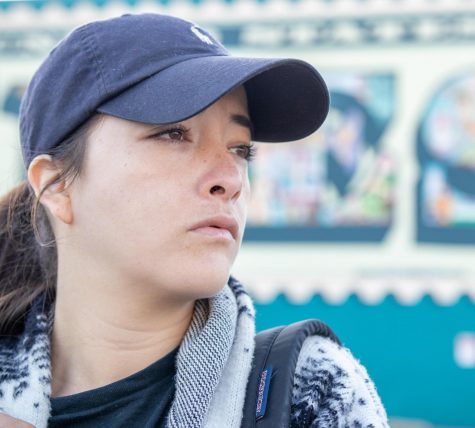
Dreamer Jackie Garcia stands in front of the Fresno mural by artist Francisco Vargas which celebrates the diversity of the city on Saturday, Nov. 2, 2019.
An estimated 50,000 to 70,000 undocumented students are enrolled at California Community Colleges.
“People think I do [remember], but I was 3. My earliest memory that I could think of is just eating soup at my grandma’s house,” said Gustavo Hernandez, a student at Fresno City College. He is currently undecided about his major but plans to open up his own business one day.
Hernandez is one of many DACA students on campus.
His dad worked and his mom helped around the house. He remembers moving around a lot when he was a kid. He attended Greenberg Elementary and later, Roosevelt Elementary School.
Hernandez remembers that kids in his elementary school teased him, calling him several demeaning terms; he did not even know what those terms meant.
“I was expected to not get in trouble,” Hernandez said, “just avoid trouble.”
Hernandez said his parents pleaded with him to avoid trouble at all cost because unwanted trouble could jeopardize his future. He did not want to break any laws and wanted to be a good person.
But being undocumented is not, by any means, easy. Hernandez’s day consists of waking up at 6 a.m, getting dressed and eating breakfast, before heading to his nine to 10 hour work day. On the days he goes to school, he wakes up early and goes to FCC to study there.
He said that after high school, he was more focused on working and getting by than he was on his education. As the years went on, however, he decided to take his education more seriously and has been balancing his work and classes.
“Before DACA I was just here undocumented,” Hernandez said. “My parents are not as worried as they were.” He feared deportation, but now DACA has granted him many privileges–alleviating those fears.
Hernandez wants politicians to consider the stories and emotions of undocumented students and what they go through. He said that if politicians understood those obstacles, then they might begin to understand the real issue.
He feels grateful that he was granted DACA status before it was canceled by the Trump administration.
The Supreme Court is just days away from hearing oral arguments about DACA which has been in limbo since September 2017 when Trump ordered his administration to stop renewing work permits.
“I am a little terrified about the [Supreme Court] decision,” Jackie said.
The Dangers of Crossing
Luis Fernando Hernandez came to the U.S. in the 1970s when he was 17. He lived in Nayarit, Mexico, one of the 31 states that, with Mexico City, comprise Mexico.
“I wanted to come here [the U.S.] because I was in poverty in Mexico,” he said. Fernando Hernandez longed to sustain himself. He had family in the U.S. who obtained papers for him to become a permanent resident.
He said he had crossed the border legally.
Marlene Hernadez, Fernando Hernandez’s wife, was another matter. He met her back in his hometown and chose to help her join him in the U.S., even though doing so would jeopardize his own residency.
Marlene remembers two little girls that traveled with them.
“We went through dirt paths and went through a little hole under the fence,” she said. “The little girls fit perfectly, but it was harder for me to get through.”
But Marlene did make it to the U.S. and finally became a citizen in January 2018. It seems impossible that something so important could take so long, but Marlene and immigrants like her do not have an instruction manual to succeed in their new country.
She didn’t speak much English, and still doesn’t; relying on her son as a primary means of translation. She didn’t know the complexities of the immigration laws.
“I waited a long time because I didn’t know who to get in contact with,” she said. Resources proved elusive. It was only thanks to her adult children that she was finally able to acquire citizenship, decades after crossing the border.
Many immigrants do not make it through at all. An unclassified report obtained by ABC news concluded that 260 migrants died crossing the southern border of the U.S. in 2018. Fifty of those deaths were marked “water-related.”
Marlene swam across a river during her journey. But the greatest threat that she faced was heat exposure, which was responsible for the remainder of the deaths.
Seven-year-old Jakelin Caal Maquin was travelling from Guatemala with her father and a group of 163 others, including 50 unaccompanied children, when her group was apprehended by border patrol near the New Mexico border on March 30, 2019, according to an ABC News article.
She died of dehydration and cardiac arrest while in custody, according to the article.
For the apprehended children that survive, living undocumented in border facilities poses its own dangers.
The Trump administration’s controversial child separation policy, a punitive measure that separated undocumented immigrants in custody from their children was first announced in April 2018 by then Attorney General Jeff Sessions, but recent investigations have unearthed that it actually began a year earlier, according to the article “Democrats Grill Trump Administration Officials Over Family Separation Policy on the Border,” published in USA Today.
The policy was widely condemned, and eventually rescinded by executive order. But officials said it still continues today in smaller numbers. As reported by USA Today, Commander Jonathan White, who oversaw the care of minors for Health and Human Services, said he raised concerns that separation would mean lifelong psychological trauma for the children involved.
Sergio Hernandez, the son of Marlene and Luis Hernandez, said he also worried that he could be separated from his parents. “It was hard to see other kids’ parents being able to go anywhere. I felt anxious and fearful of what might happen if one of them got in trouble with the law.”
For citizens, a brush with the law might mean jail time, or a fine. For the undocumented, it could mean deportation.
Marlene still worries about it. She sees immigrants on television having their citizenship revoked for any conflict with the law. “Even being a citizen, any little crime I could commit would end my time being here,” she said.
Coming to the U.S. meant danger, the possibility of death, and now the possibility of comfort and safety being revoked at any time. Still, when Marlene became a citizen, she felt free. She likes the reassurance of being here, “being safe, and for my kids. They benefit more being here.”
Despite everything, Marlene still sees the U.S. as a place of opportunity compared to back home.
Cristina Cortez, 30, was born in Guadalajara, Jalisco Mexico, and she came to the U.S. tucked away in a U-Haul. She braved barbed wire fences, hitched a ride with a semi truck, a cab, and finally her cousin, who took her to Culver City in Los Angeles.
She has seven siblings, two still in Mexico. Like Marlene, she’s a mother, but unlike Marlene, she doesn’t worry much about getting deported. “If it happens, it happens and I’ll go back to Mexico,” she said. “I would take my kid with me.”
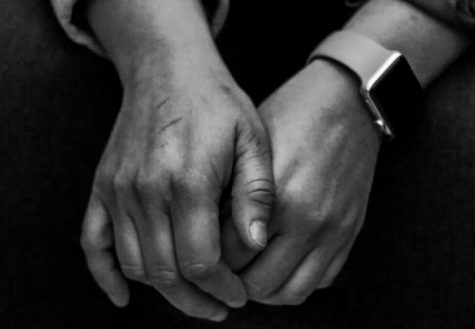
Christina Cortez, 30, tells her story of crossing the border into the United States at the young age of 5, leaving behind two of her seven siblings in her home country of Mexico, Monday, Nov. 4, 2019.
Behind the Scenes
There are several steps in the process to become a citizen. This system can be quick and merciful or it can be long and gruesome.
Applicants wait years to become citizens. Most never do.
The first step to citizenship is applying and being granted a green card.
A green card permits the holder certain rights, as well as legal residency in the U.S., but these can be easily revoked if the holder commits a crime as simple as a parking ticket, attempts to vote in a national election or fails to submit change in residency paperwork in a timely fashion.
Some of the pathways to apply for a green card include application through a family member as a sponsor, eligibility for employment and seeking asylum.
Even if an applicant meets any one of these criteria they must not be a minor, be able to verbally communicate—as well as write and read—in English and be “a person of good moral character,” according to the Department of Homeland Security website.
After a person receives their green card, their process to citizenship is still long.
To apply for citizenship, an applicant must have their green card for at least five years. It could be three years only if they have a spouse that is an American citizen.
The green card is step one of the lengthy 10 step process to citizenship.
A naturalization test made up of rigourous American facts from both past and present. A formal interview. An allegiant oath.
Immigration lawyers, non-profit organizations, and programs created by previous administrations exist, but for undocumented immigrants like Marlene Hernadez language barriers and lack of resources can prove insurmountable for decades at a time.
The Dream
The Dream Center at FCC offers counceling and emotional support for undocumented students, or students who come from families that are in some part undocumented, according to Ben Reynoso, Dream Center director.
The center has a liaison in the financial aid office that helps connect undocumented students with aid they might be eligible for.
The majority of students who seek help from the Dream Center are from Latin American countries, but they also serve refugees and asylum students, according to Reynoso.
DACA students like Jackie rely on the Dream Center a great deal. “I came in and I let them know that I’m very sick,” she said. She’s been dealing with her illness for two years but couldn’t find anyone to direct her to the proper care. “I just came in and [the Dream Center] got me an appointment and I might just be getting the specialist that I need.”
The Dream Center refers dreamers and the undocumented to the Services, Immigrant Rights and Education Network (SIREN) and the Educational Leadership Foundation for legal assistance. By contrast, the Dream Center mainly focuses on their academics.
“Any question that I have I go into the Dream Center and they answer all my questions. They try their hardest to help me,” Jackie said.
Determination
Jackie wouldn’t be here without her mother’s sacrifices–without the decision to come to this country, to brave the long walk: without her simple, daring answer of, “Yes.” Her mother worked the fields, kept them alive even when they were living out of their car. She said she’s grateful for those sacrifices.
“I’m doing all of this for my family. I’m doing all of this because I want to give back to them,” she said. She wants to give back to that family, to break the stigma that hangs over all of them. Poor. Uneducated. Undocumented.
“I know that if I continue working hard, pushing every day, not letting this sickness push me back,” she said, crying, “but make me stronger–I know that I will accomplish everything.”
Some of the names in this story have been changed to protect the identities of the undocumented.
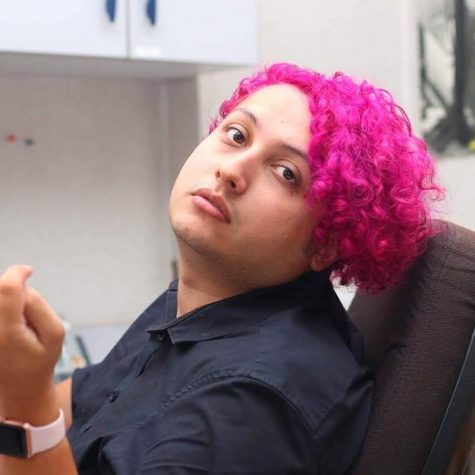
Tommy Tribble is the 25-year-old editor in chief of the Rampage, formerly the opinion editor. Tommy is an English major, a writer, an aspiring novelist,...
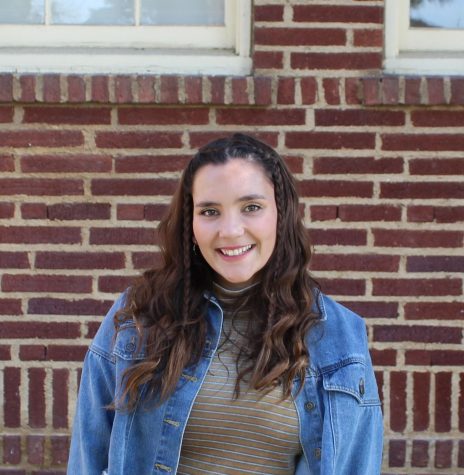
Hannah Lanier is the 20 year old New Editor and reporter for the Rampage at Fresno City College. Born and raised in Fresno, California, Lanier is the youngest...

Avery Johnston, 26, is a third year college student at Fresno City College. She is graduating this semester from FCC as a journalism major. Avery will...

Leticia Leal, 19, is a fourth semester student at Fresno City College. She was born in Fresno and travels to Los Angeles often to visit her family. This...
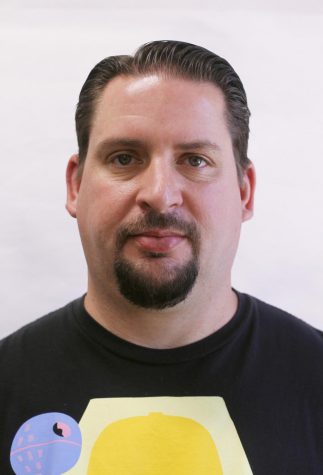
Mark Ross was born and raised in Fresno, California and attended Bullard High School. Mark Ross is currently a student at Fresno City College studying...


